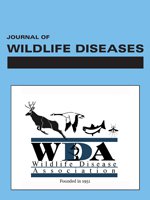Projects to rehabilitate confiscated animals must carefully consider the risks of disease when determining whether to release these animals back into the wild or to incorporate them into captive breeding programs. Avipox and paramyxovirus type 1 (PMV-1) infections are important causes of morbidity and mortality during rehabilitation of confiscated houbara bustards (Chlamydotis undulata macqueenii). This paper presents key findings of an intensive health monitoring program (physical condition, hematology, serology, endoscopy, microbiology, and virology) of two flocks of houbara bustards that survived outbreaks of septicemic avipox and PMV-1 respectively. Mortality in each flock from avipox and PMV-1 infections were 47% and 25% respectively, and the clinicopathologic features and management of each outbreak are presented. Avipox and PMV-1 viruses were not isolated from surviving birds monitored monthly for 11 mo after initial infection nor were septicemic or diptheritic avipox and PMV-1 infections detected in the captive breeding collection into which surviving birds were ultimately integrated up to 24 mo later. Adenovirus was isolated from four birds during the study demonstrating that novel disease agents of uncertain pathogenicity may be carried latently and intermittently shed by confiscated birds. This paper demonstrates the risk of importing pathogens with illegally traded houbara bustards and reinforces the need for surveillance programs at rehabilitation centers for these birds. We recommend that confiscated houbara bustards integrated into captive breeding programs be managed separately from captive-bred stock. Other measures should include separate facilities for adult birds and rearing facilities for offspring derived from different stock lines and strict sanitary measures. Additionally, health monitoring of confiscated birds should continue after birds are integrated into captive flocks.
How to translate text using browser tools
1 July 2002
MEDICAL DILEMMAS ASSOCIATED WITH REHABILITATING CONFISCATED HOUBARA BUSTARDS (CHLAMYDOTIS UNDULATA MACQUEENII) AFTER AVIAN POX AND PARAMYXOVIRUS TYPE 1 INFECTION
Thomas A. Bailey,
Christudas Silvanose,
Ruth Manvell,
Richard E. Gough,
Joerg Kinne,
Olivier Combreau,
Fred Launay

Journal of Wildlife Diseases
Vol. 38 • No. 3
July 2002
Vol. 38 • No. 3
July 2002
avipox
disease
health monitoring
Houbara Bustard
paramyxovirus type 1
quarantine
rehabilitation




